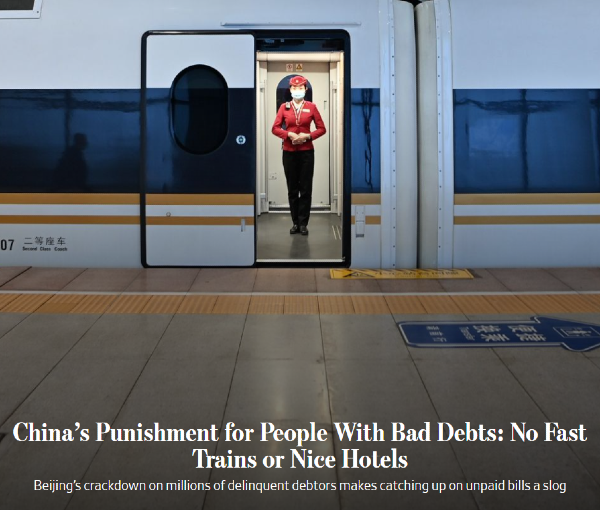

China's economy is experiencing worrying deflationary pressures due to soaring household debt, with significant implications for the global economic landscape.
China is experiencing a worrying economic trend, with signs pointing towards deflationary pressures that could have implications for the global economy, including the United States. In recent years, China's household debt has soared, climbing by 50% over the past five years to an estimated 11 trillion yuan. While this figure is lower than the 17 trillion dollars of debt owed by Americans, it is substantial for a country with lower average incomes.
A Wall Street Journal article delves into the punitive measures Beijing has implemented to crack down on delinquent debtors, restricting access to fast trains and upscale hotels for those with unpaid bills. This anecdotal evidence underscores the broader deflationary forces at play.

The spike in household debt can be linked to China's long housing boom, where many individuals took on significant debt to acquire properties, often leaving them unoccupied. Now, with housing prices declining, a vast number of Chinese consumers are struggling with debts they find challenging to manage. Foreclosures have surged, with a 43% increase in foreclosed homes listed for sale in 2023.
The rise in personal debt is not confined to mortgages. There has been a significant uptick in the use of credit cards and personal credit lines, with outstanding balances on credit cards alone jumping by 50% between 2018 and 2023, surpassing the 1 trillion yuan mark. Digital payment platforms like Alipay and WeChat have also facilitated the growth of consumer loans as their popularity has soared.
Many economists argue that a U.S.-style financial crisis is unlikely to hit China soon, mainly due to its state-controlled banking system, which can absorb losses and inject capital in emergencies. However, this does not account for the involvement of international banks and the eurodollar system in Chinese lending, which could spread financial contagion beyond China's borders.
The fear often promulgated by economists—that the onset of deflation leads to a downward spiral as consumers delay purchases in anticipation of lower future prices—is critiqued as an oversimplification. The argument overlooks the reality that people continue to buy depreciating assets like cars, technology, and even use credit cards, which implies a willingness to pay more now rather than waiting.
Comparing economic indicators between China and the United States reveals that China's debt to GDP ratio, overall debt increase, and M2 money supply growth have all risen significantly, in some cases at a higher percentage than in the United States. Despite this, Americans may find it challenging to envision a similar deflationary scenario in their own country, having recently experienced significant price inflation.
The economic situation in China warrants close attention as it has the potential to influence the global economy, including the United States. Analysts and investors alike must weigh these deflationary risks against other factors when considering the economic outlook for 2024 and beyond, taking care to separate emotional biases from their assessments.